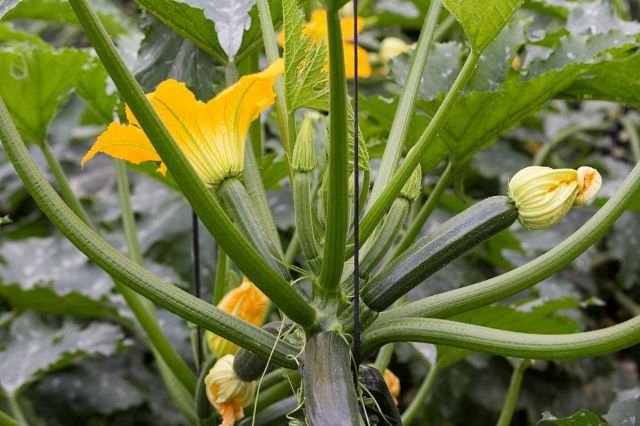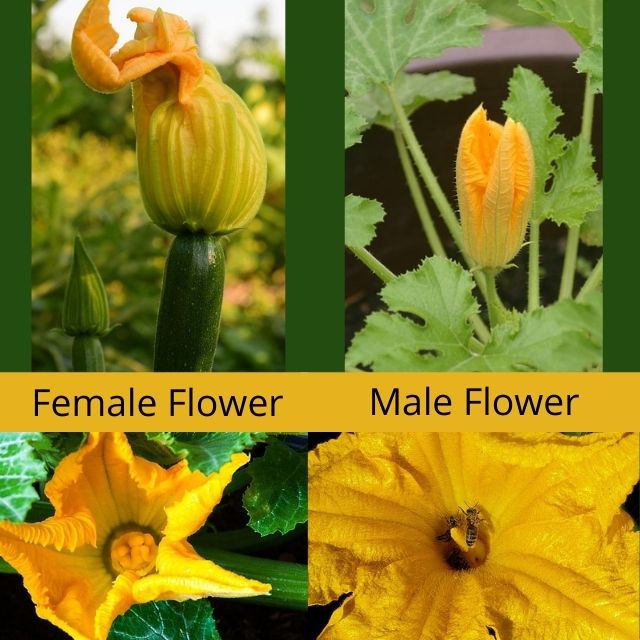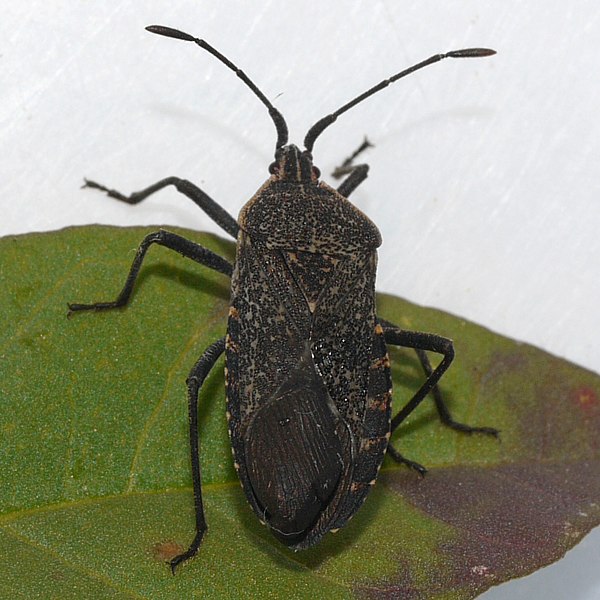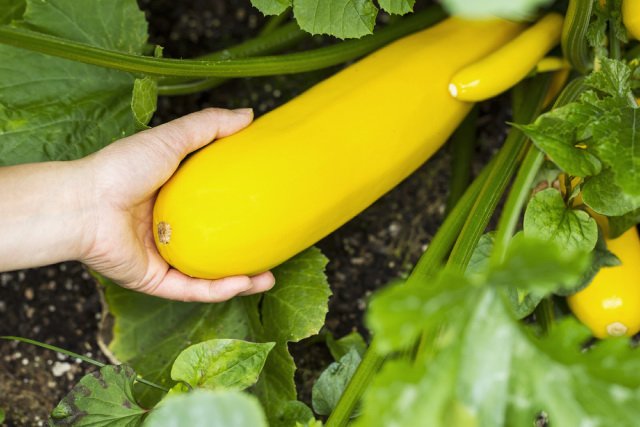As a zucchini grower, you’re more likely to struggle with a surplus of tasty vegetables than you are a lack of them. That doesn’t mean that growing zucchini is always problem-free though. If your crop is looking a little on the small side, there are a number of factors that could be at play.

Common causes for small zucchinis are a lack of soil nutrients, irregular watering, poor pollination, or the zucchini plant being unable to photosynthesize properly as a result of disease or too little sun.
Fortunately, most of these factors are within your control. Today, we’ll be looking in more detail at the common causes of zucchinis ending up smaller than you’d like, as well as solutions to help you keep a healthy, productive harvest coming through.
Related: Zucchini Flowering But Not Producing? | Zucchini Leaves Turning Yellow | Growing Zucchini: Planting, Caring, And Harvesting Zucchini
Table of Contents
Lack of Soil Nutrients Can Cause Small Zucchinis
Zucchini is a relatively forgiving and resilient crop, but that doesn’t mean they’re not hungry plants. In fact, zucchinis are heavy feeders and require a decent amount of organic nutrients in order to produce reliably big veggies.
When transplanting zucchini seedlings outdoors, dig a hole of roughly a spade’s depth and width. Fill this with a mixture of homemade compost, or manure that is well rotted, and loamy, and well-draining soil. Depending on your soil quality, you may also want to add a general-purpose fertilizer like this one to keep the nutrient levels up.
Once zucchini fruits start to form, it’s a good idea to start feeding your plant with a high potassium fertilizer every couple of weeks. This organic tomato feed can be a good option for this. This will help the zucchini plant to prioritize vegetable production.
An excess of nitrogen can cause a less desirable effect. Nitrogen is the nutrient primarily responsible for green, leafy growth. If your zucchini plant has too much nitrogen available, you may find it encourages green leaf production over its vegetable production. Whilst this isn’t inherently ‘unhealthy’ for the plant, it means your harvest isn’t going to be as plentiful or as big!
Keep in mind also that zucchini plants like a bit of space. Not only does this give them room to spread out and capture a decent amount of sunlight, but it also means they are in less competition with their neighbors. Ensure you give each zucchini plant at least a square meter of room to itself. A cramped bed is more likely to result in zucchini competing for nutrients, which can result in smaller vegetables.
Irregular Watering Can Result in Stunted Zucchini Growth
Zucchini needs consistently moist soil if it’s going to produce fruit of a good size. Consistency is key here. Periods of relative drought (either caused by weather or forgetful gardening!) followed by intense periods of watering to try to make amends can stress the zucchini plant and result in stunted zucchini production.
If you are planning to go away for more than a few days and you know the week is likely to be a dry one, why not get a friendly neighbor to pop round and give your zucchini a top-up?
Similarly, drip irrigation systems can be great at ensuring your zucchini crop stays hydrated without saturating root systems with water or getting leaves wet. Both of these can cause problems of their own – namely root rot and fungal disease.
Lack of Pollination Can Restrict Zucchini Production

Like many squash plants, most zucchini species rely on pollen from male flowers being transferred to female flowers before the plant can bear fruit.
If your zucchini plant is producing relatively well-developed zucchini that are just a bit smaller than you’d hoped for, lack of pollination is unlikely to be the issue. However, if your zucchini plant is just starting to produce tiny vegetables before they then wither and fade, this could be due to a lack of readily available pollinators.
In the short term, you can carry out a bit of bee work yourself. Simply use a light brush to transfer pollen from male flowers to female flowers. You can also lightly shake the flowers to try to release pollen. Although this is less targeted and less likely to be effective.
On a longer-term basis, encouraging a healthy ecosystem within your garden so that pollinators are attracted to your patch is key. Planting a variety of flowering shrubs, herbs, and annuals can help keep bees, hoverflies, and other helpful insects happy and coming back year after year.
Lack of Photosynthesis Can Result in Poor Zucchini Production
Photosynthesis is the process by which plants convert light energy from the sun into energy that they can use for growth and production. There are a number of factors that can affect your zucchini plants’ ability to photosynthesize effectively.
Lack of Regular Sun
Your zucchini plant is going to be happiest in full sun. In order for it to harness the sun’s energy, it needs at least 6 – 8 hours a day. The more the better.
Avoid planting it somewhere where other plants are going to crowd it out. Give each zucchini plant enough room to spread its leaves and catch rays. At least a square meter per plant should be a minimum to aim for.
Planting zucchini in full sun is also more likely to attract pollinators to your crop. Another reason to think about where to put your garden bed.
Powdery Mildew
Powdery mildew is one of the most common fungal diseases affecting zucchini. It is easily identified by its white, talcum-like appearance on leaves.
This coating may not prove fatal to the zucchini plant. But it will restrict your zucchini leaves’ ability to carry out photosynthesis. This in turn means less energy for healthy growth and vegetable production.
If you catch powdery mildew early enough, you can sometimes stop the rot by pruning affected leaves and burning them. However, as with all fungal diseases, prevention is a better route than eradication.
Try to avoid leaving moisture on your leaves and keep your bed well aerated. Fungal diseases thrive in damp, moist, cramped conditions. Regular weeding to ensure that your zucchini plants have room to breathe is essential.
Related: Milk Spray Recipe For Powdery Mildew (Natural Fungicide for Plants)
Squash Bugs
There are a whole host of hungry critters that will happily munch away on your zucchini, but squash bugs are probably the most common. They also happen to be one of the easiest to spot, though unfortunately not the easiest to catch!
Keep an eye out for small clusters of bronze eggs appearing on the underside of your leaves. If left to hatch, these will eventually develop into small gray bugs. A heavy infestation can decimate your zucchini bed and ravage the plants’ leaves.

Best-case scenario, this can stunt the production of new zucchini. Worst case scenario, your plant may struggle to survive at all.
If you spot squash bugs early on, removing them by hand can be enough to curb a more severe infestation. However, using fine insect mesh at the beginning of the growing season can be a good way of preventing eggs from being laid on your zucchini plants in the first place.
You can also try companion planting. Certain plants, such as nasturtiums, have been seen to hold good repellent properties against squash bugs. Similarly, encouraging a healthy ecosystem in which hunting spiders and other predatory critters are welcome can also help keep squash bug populations in check.
Related: 11 Zucchini Pests (And How to Get Rid of Them!)
Choosing Your Variety Can Help You to Grow Large Zucchini
Consider which variety of zucchini you’re going to plant if you really want to maximize the size of your vegetables. Some zucchini varieties are selected because they are more likely to provide reliably large yields. Others can be selected for their disease-resistant properties. Helping to prevent unwanted damage to your zucchini crop that can in turn hinder fruit production.

‘Orelia’ is a good, vivid yellow option that also has good resistance to late-season mildew. ‘Tuscany’ is a variety known for producing large, straight fruit. Always purchase from reputable seed sellers in order to reduce your chance of ending up with sub-quality stock.
Related Reading:
